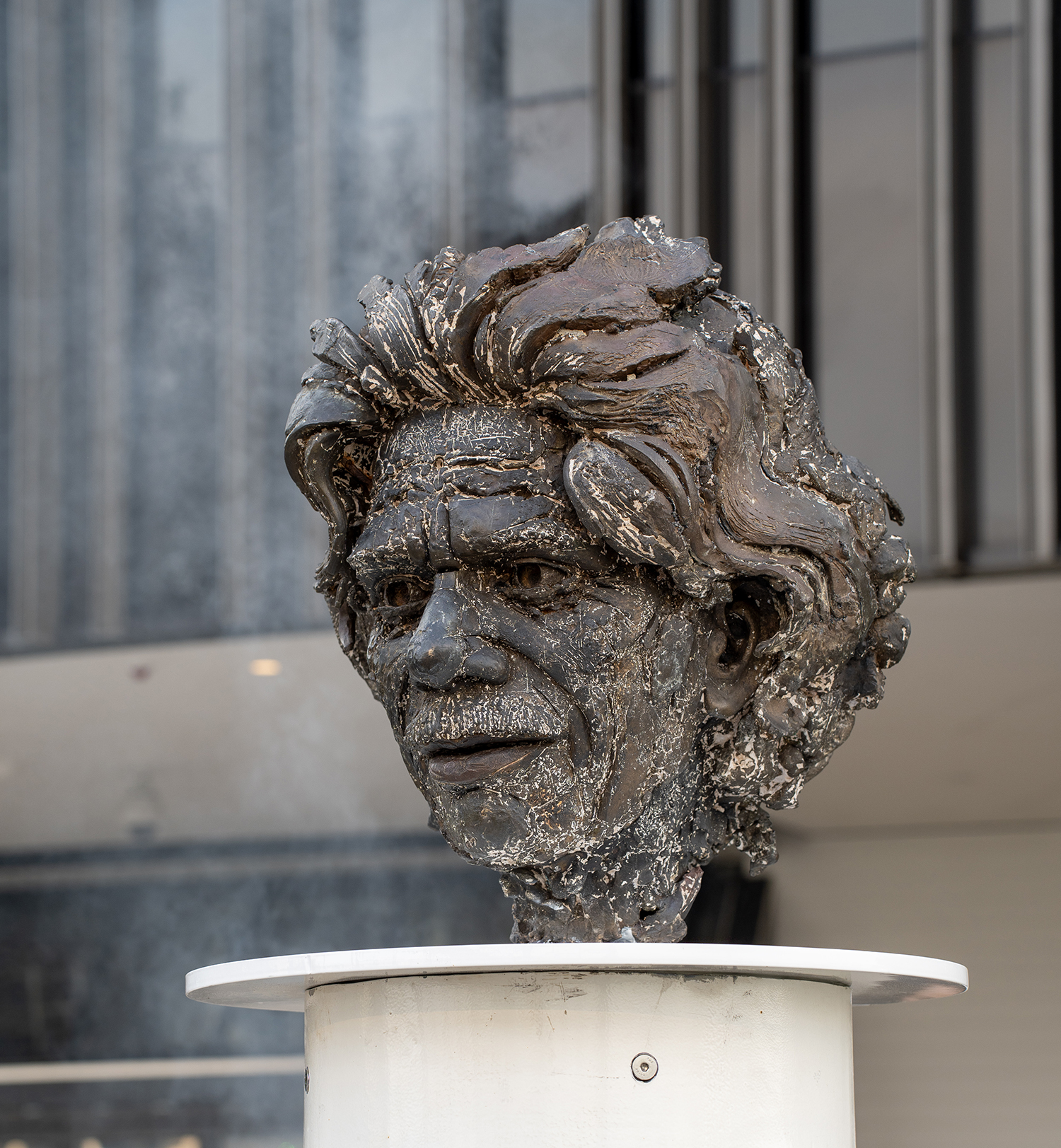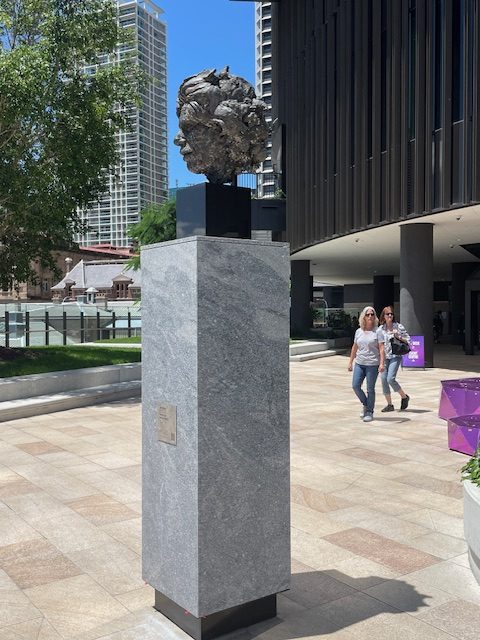John Elliott was born in Canterbury, England, and studied at the Gravesend School of Art, Kent (1959-61) and the Royal College of Art, London (1961-65).
From 1989 to 1999 he was commissioned to produce a series of works for the Catholic Archdiocese at St. Stephen’s Cathedral, Brisbane. These works include the Shrine of Mary (Madonna wood carving, 5 Plaques and Panelled Plaster Relief); Bronze Crucifix and Shrine of Mary MacKillop (assembled wood and rood screens) in the Mary MacKillop Chapel.
In the early 2000s, John completed notable works for the Queensland Government, including the bust of Senator Neville Bonner for the Neville Bonner Building and the Travelling North sandstone relief for 33 Charlotte Street, Brisbane.
Group exhibitions include the Adelaide Festival of Arts (VAB grant), Mildura Sculpture Triennials, 2nd Australian Sculpture Triennial at the National Gallery of Victoria, Blake Prize for Religious Art and the Centre Gallery, Gold Coast and joint exhibitions in Canberra and Brisbane galleries (VAB grant). He is represented in public and private collections in the UK, USA and Australia, including the Queensland Art Gallery.
Part time and full time teaching positions were held from 1966 to 1996 in the UK and Australia, including Queensland College of Art, Griffith University, Brisbane from1980 to 1996.
For further information, please visit:
https://art.catholic.org.au/2020/09/22/commissioning-a-liturgical-artist/
Neville Bonner AO (1922-1999)
Jagera Elder
Commonwealth Parliament –
Senator for Queensland from 1971 to 1983
- appointed by the Queensland Parliament on 11 June 1971 to fill a Casual Vacancy in the Senate
- elected on 2 December 1972
- elected on 18 May 1974 (double dissolution)
- elected on 13 December 1975 (double dissolution)
- elected on 18 October 1980
- candidate at 5 March 1983 (double dissolution) but not elected.
Neville Thomas Bonner was born on a government-issue blanket under a tree on Ukerebagh Island, Tweed Heads in 1922. Bonner was the grandson of ‘Jung Jung’ the last fully initiated member of the Jagera people. He completed one year of formal education before working in many roles including as a rodeo drover, cane cutter, boomerang maker and bridge carpenter.
In the 1940’s he married his first wife and moved to her birthplace, Palm Island, where he experienced the institutional life of an Aboriginal reservation for the first time. Over the next 15 years, while raising five sons and two foster daughters, he became involved in community affairs and also embraced the concept of ‘racial togetherness’.
In 1971, Neville Bonner became the first Aboriginal person to be a Senator when he was successfully nominated by the Queensland Parliament to fill a Casual Vacancy. In 1972, Senator Bonner was elected in his own right and re-elected again in 1974, 1975 and 1980.
Neville Bonner worked tirelessly as a respected Queensland Senator and in 1979 was awarded the Australian of the Year. In 1984 he was awarded the title of Officer of the Order of Australia.
From 1983 to 1991, Neville Bonner was a Member of the Board of the Australian Broadcasting Commission. He spent over six years as the Senior Official Visitor to all Queensland Correctional Centres and was Chair of the Indigenous Advisory Council which advised the Queensland Government on all Indigenous issues.
Neville Bonner’s own experience of hunger, discrimination and dispossession inspired him to become an advocate for change in disadvantaged communities all over the world and he travelled widely as a patron of World Vision and Community Aid Abroad.











